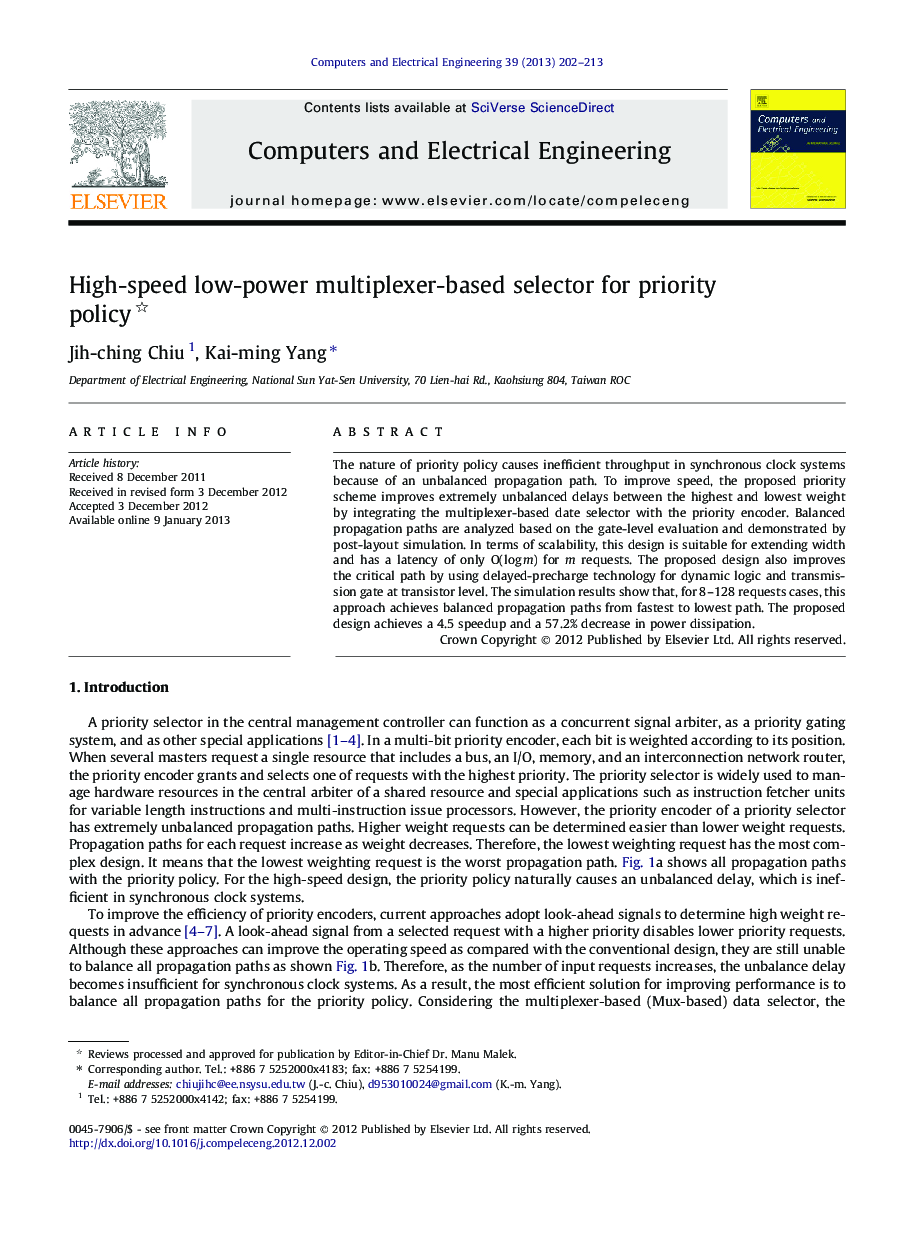| کد مقاله | کد نشریه | سال انتشار | مقاله انگلیسی | نسخه تمام متن |
|---|---|---|---|---|
| 455031 | 695334 | 2013 | 12 صفحه PDF | دانلود رایگان |

The nature of priority policy causes inefficient throughput in synchronous clock systems because of an unbalanced propagation path. To improve speed, the proposed priority scheme improves extremely unbalanced delays between the highest and lowest weight by integrating the multiplexer-based date selector with the priority encoder. Balanced propagation paths are analyzed based on the gate-level evaluation and demonstrated by post-layout simulation. In terms of scalability, this design is suitable for extending width and has a latency of only O(log m) for m requests. The proposed design also improves the critical path by using delayed-precharge technology for dynamic logic and transmission gate at transistor level. The simulation results show that, for 8–128 requests cases, this approach achieves balanced propagation paths from fastest to lowest path. The proposed design achieves a 4.5 speedup and a 57.2% decrease in power dissipation.
The native feature of priority policy, an extremely unbalanced encoder signal delay, causes inefficient throughput in synchronous clock systems. To balance all propagation paths, this study improves efficiency by integrating the multiplexer-based data selector and priority encoder.Figure optionsDownload as PowerPoint slideHighlights
► The nature of priority policy causes inefficient throughput in synchronous clock systems.
► The proposed design balance propagation paths by integrating priority the encoder and data selector.
► The proposed priority scheme improves extremely unbalanced delays between the highest and lowest weight.
► The balanced propagation path technique is suitable for extending numerous requests.
Journal: Computers & Electrical Engineering - Volume 39, Issue 2, February 2013, Pages 202–213